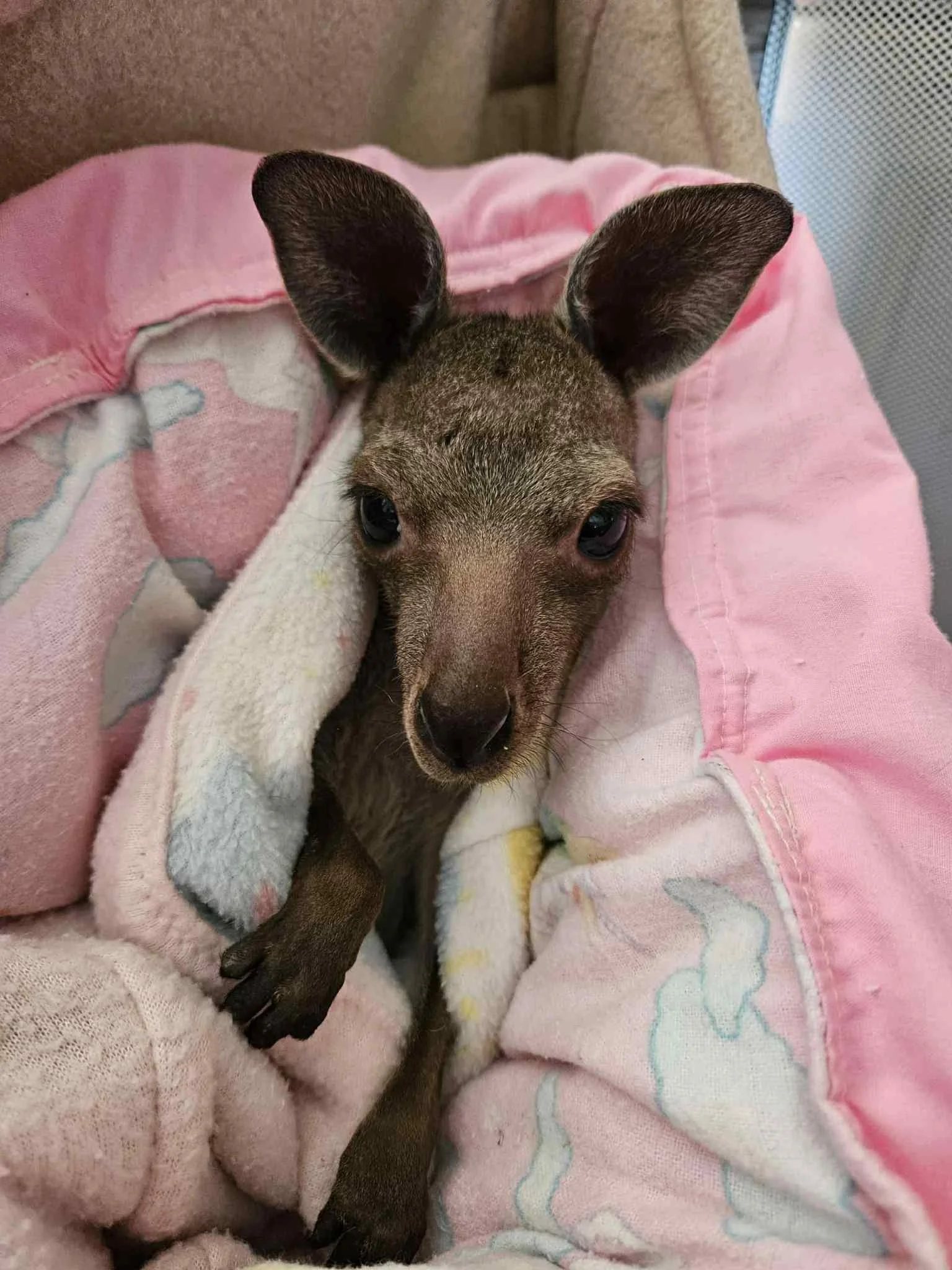MOP vs Carer
MOP vs Carer – The Joey’s Fate Depends on You
MOP: Oh look, I’ve just found a joey. How cute!
Carer: Poor bub. Let’s get her safe, warm, and tucked in.
MOP: She’s so bright and happy!
Carer: Let’s check her for injuries—shock can hide pain.
MOP: She’d make a beautiful pet.
Carer: Wildlife are not pets. Let’s get her to a registered carer so she can return to the wild.
MOP: I guess she needs milk. Let’s see… cow’s milk, soy milk… oh! I’ve got some Divetalac from an orphan lamb.
Carer: Let’s start her on Vytrate to protect her gut before introducing species-appropriate milk.
MOP: Baby needs milk now! I’ll just fill her bottle and see how much she drinks.
Carer: First, weigh her, assess hydration, and measure the correct amount carefully.
MOP: Oh look how cute she is guzzling the milk!
Carer: Gently, gently—too fast and it could enter her lungs and cause pneumonia.
MOP: I think she needs me to teach her to walk.
Carer: Based on her weight, she’s still full-time in Mum’s pouch. She’s not ready.
MOP: But I’ve seen joeys out of the pouch at that size.
Carer: Joeys emerge when they’re ready. Mum protects them until then.
MOP: She loves sitting on the couch watching TV with me.
Carer: She needs a quiet pouch, not overstimulation. Human environments cause stress and imprinting.
MOP: I have dinner plans tonight. It’s okay—I’ll leave the baby home. She’ll be fine if she misses a feed.
Carer: I’ll need to cancel my dinner plans. It’s important to stay with the joey and monitor her for signs of stress or pain. Missing a feed isn’t okay—hydration and routine are critical.
MOP: I can take her shopping with me—she’ll love the car!
Carer: No, she won’t. She needs stability, quiet, and zero stress. Car rides are disorienting and frightening.
MOP: I’ll pop her in a shopping bag and take her to Bunnings and Woolworths.
Carer: She needs to stay away from strangers. They frighten her. She is not a puppy.
MOP: She’s great with my dog and kids.
Carer: Kangaroos are not companions. They need species-specific care and minimal human contact.
MOP: I’m raising her alone.
Carer: Joeys need regulated feeding, vet care, and socialization with their own kind. Lone raising risks her future.
MOP: I’ll post in a local Facebook group and wait for advice.
Carer: I’ll call the wildlife rescue hotline immediately. Time matters—delays can cost lives.
MOP: She’s bonded with me now. It would be cruel to take her away.
Carer: Bonding with humans causes imprinting. That’s what’s cruel—because it robs her of a wild future.
MOP: I’ve had her for a week and she seems fine.
Carer: Without proper hydration, nutrition, and vet care, internal damage may already be irreversible.
MOP: I’ll just keep her until she’s bigger, then release her.
Carer: Joeys need structured release plans, mob integration, and months of preparation. Dumping her into the bush is abandonment.
MOP: Oh no—she has diarrhoea! It’s everywhere. It’s on my new couch, the dog, the kids… it won’t stop!
Carer: This joey has severe gut issues. Let’s treat her immediately.
MOP: I’ll give her to a carer—they’ll fix her.
Carer: I’m sorry. It’s too late. You didn’t mean to—but you killed her.
The Message You Need to Hear
If you find a joey, hand her to a registered wildlife carer immediately. It is illegal to hold wildlife longer than 72 hours without a license. This isn’t about how a joey can enrich your life—it’s about how we enrich hers, so she can return to the wild, strong and free, with her new mob.
That journey takes 18 to 24 months. It takes knowledge, care, and commitment. Do the right thing. Call a carer. Save a life.
Every joey deserves a chance to grow up wild. Not on a couch. Not in a shopping bag. Not as a pet. She deserves the wind, the mob, the bush, and the freedom her mother would have given her. Be the human who gives her that chance.
This is Lucy. Kept by a member of the public for three weeks with a dislocated ankle, she was forced to walk on it when she weighed just 1kg—at an age when she should have been securely pouched and protected.
Now, she faces the possibility of surgery and a long rehabilitation journey to become the wild girl she was born to be.

